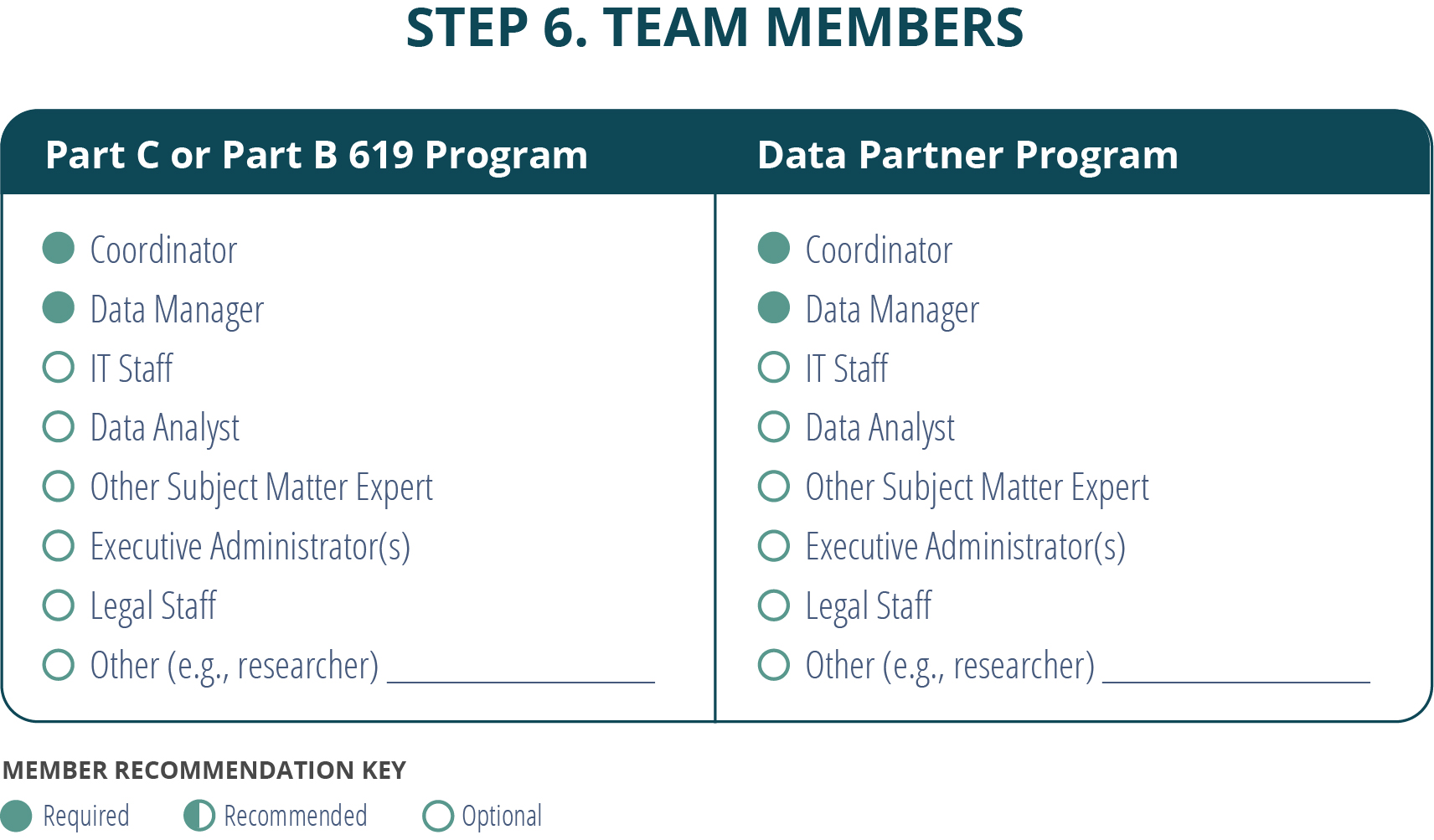- Overview
- Data Linking Introduction
- Data Linking Partnerships
- Part C and Part B 619 Data Linking Partners
- Steps to Data Linking
- Resources
- Citations and Acknowledgments
| Steps to Data Linking | Step 1: Check Data | Step 2: Assess Partner Readiness | Step 3: Formalize Data Linking Partnership | Step 4: Link Data | Step 5: Analyze Data | Step 6: Sustain Data Linking |
|---|

Ideally, by this point in the data linking process, Part C and Part B 619 program staff have developed data linking partnerships and documents, established processes, created a linked data set, and planned and conducted analyses of the linked data to answer previously unanswerable questions. All data linking partners have expended significant resources and time to ensure the success of the data linking efforts.
In Step 6, data linking partners consider supports for sustaining the data linking processes. Sustainability may be important when the linked data addressed the initial query and/or there is political and administrative will to continue. Therefore, the partners should consider how to efficiently sustain the data linking work over time and through different administrations. Important activities include documenting data linking activities, considering potential improvements, and updating the data linking partnership management plan. The table below displays the roles of team members potentially involved in Step 6 activities.

The tool for Step 6 includes a Sustaining Data Linking Checklist with suggested topics to document and include in the updated data linking partnership management plan.
Activity 6a: Document process and suggest improvements
The details of the data linking process should be included in the data linking partnership management plan developed in Activity 3a of Step 3 (Formalize Data Linking Partnership). Descriptions of who, what, when, where, why, and how of the data linking are important for future data linking. Keeping these descriptions in only the data linking partnership management plan, and not in the data sharing agreement, allows for easier and faster updating of the plan when details and procedures inevitably change.
Ideally, both data linking partners have documented their data linking procedures throughout the work. If they have not, and perhaps even if they have, it is a good idea to bring together those most involved in the data linking to discuss what was done and how. Together, they can document a complete picture of the data linking process so that the data linking partnership management plan can be updated. In addition, they can capture any recommended changes to the data linking process for future consideration.
It is important to show how the linked data support evidence building activities that result in improved outcomes for children, families, and communities. Documenting how these linked data support improvements helps to justify and sustain data linking efforts.
The updates to the data linking partnership management plan should cover the data linking process in enough detail that staff with similar skill sets can replicate the process. The Sustaining Data Linking Checklist suggests topics to address to document ongoing data linking. If data linking partners use this checklist as recommended in Step 3 (Formalize Data Linking Partnership), they should be able to review and update the process quickly at the completion of the actual data linking. Including the data linking details, the subsequent analysis, and recommendations to improve the process will help the partners in the future when they repeat the data linking.
Published July 2022.

